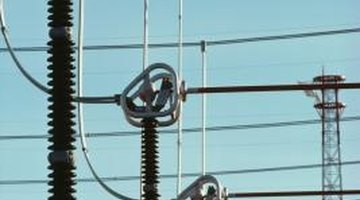How to Convert 120V to 12V
Household current in North America is distributed through the power system as 120 volts AC (alternating current). AC voltage is distributed for the purpose of operating larger appliances, such as ovens, refrigerators, stoves, heaters and television sets. Some appliances require this 120 volt AC power to be converted to 12 volts DC (Direct Current). Though some devices have built-in means to make this conversion, many require an external conversion appliance called a power supply. A power supply must be capable of supplying the necessary amperage for your device.

-
Add up the amperage needs of all devices that will be powered by your 12 volt power supply. Look at the "UL" (Underwriters Laboratories) tag on each device for power consumption information. Those that use 12 volts DC will have "12V" listed, along with the maximum amperage needed. If you want to operate 3 devices with 1 amp, 3 amps, and 1/2 amp, then a conversion power supply needs to be capable of supplying 4 1/2 amps minimum.
-
Shop for a power supply capable of supplying 12 volts as well as the total amperage all of your devices will need. For example, the total amperage the power supply must be capable of 4 1/2 amps. Select a power supply that is capable of supplying more amperage than your devices need, rounded up to the next number. Power supplies are capable of 5 amps and continue upward in multiples of 5. If you would like to add one or more additional devices to your power supply, it would be wise to choose a 10 amp power supply. If you never plan to add more devices, a 5 amp power supply would be sufficient.
-
Plug in your power supply into a standard wall outlet and turn on the power switch if it is equipped with one. Plug in your devices into the power supply one at a time. If your devices have wire terminals on the ends that connect to posts on your power supply, slide the terminals over the posts, black wire to black terminal is negative (-) and red wire to red terminal is positive (+). Tighten the turn screws against the terminals tightly.
-
Turn on your devices one at a time, especially if your power supply only provides slightly more amperage than the total amps your devices will draw from it. Some devices, such as 12 volt drills, will pull more amperage from a power supply when first turned on than what is listed on the device UL tag. This will help to prevent blowing the breaker or fuse on your power supply.
References
Resources
Tips
- Conversion from 120 volts to 12 volts is a "step-down" process that requires a power supply for conversion, whereas conversion from 12 volts to 120 volts is a "step-up" process that requires a different device called an "inverter." Either device can be purchased from any CB radio store, Ham radio store, electronics supply stores or even RV supply outlets.
Writer Bio
Kurt Schanaman has had several editorials printed by the Star-Herald Newspaper publication in Western Nebraska. He attended Western Nebraska Community College.
Photo Credits
- Photos.com/Photos.com/Getty Images
More Articles



